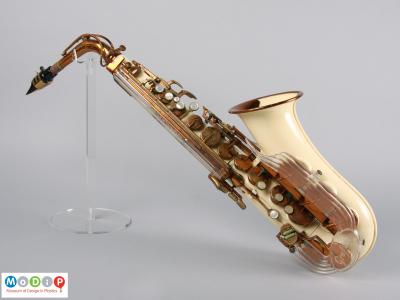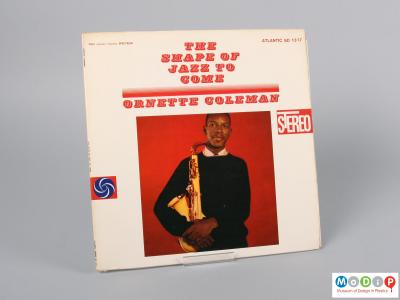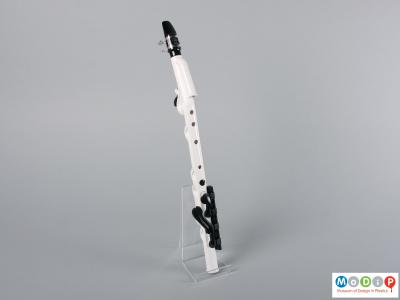Acrylic was created in the 1930s and was used in the construction of fighter plane canopies in the Second World War. When the war ended, designers and manufacturers found ways of using materials that had been developed and used in the war effort but had subsequently become more freely available.
The cream body and colourless panel of the alto saxophone (1) are made of acrylic originally by The Grafton Company and later by John E. Dallas & Sons Ltd. This particular saxophone was designed by Ettore Sommaruga and patented in 1945. Production commenced in 1950, but only lasted ten years, with less than 3000 saxophones made. All tools, machinery and jigs required to manufacture the Grafton were sold for scrap and subsequently destroyed. Notable musicians, including Charlie Parker, John Dankworth, Ade Monsbourgh and David Bowie, were known to have used a Grafton saxophone. Ornette Coleman even posed with one on the cover of his 1959 album, The Shape of Jazz to Come (2).
The saxophone is a tricky instrument to master, a lot of effort and skill is needed to achieve and maintain a pleasing note. The Yamaha Venova YVS-100 (3) is a completely new type of woodwind instrument. It is lightweight and compact making it easy to handle and transport. The simple fingering, similar to a recorder, along with the full blowing sensation, like a saxophone or clarinet, makes it a good transition instrument for both children and adults. The branched pipe structure helps to shorten the outer length but maintain the inner length to create the rich saxophone-like tone within a compact size.



